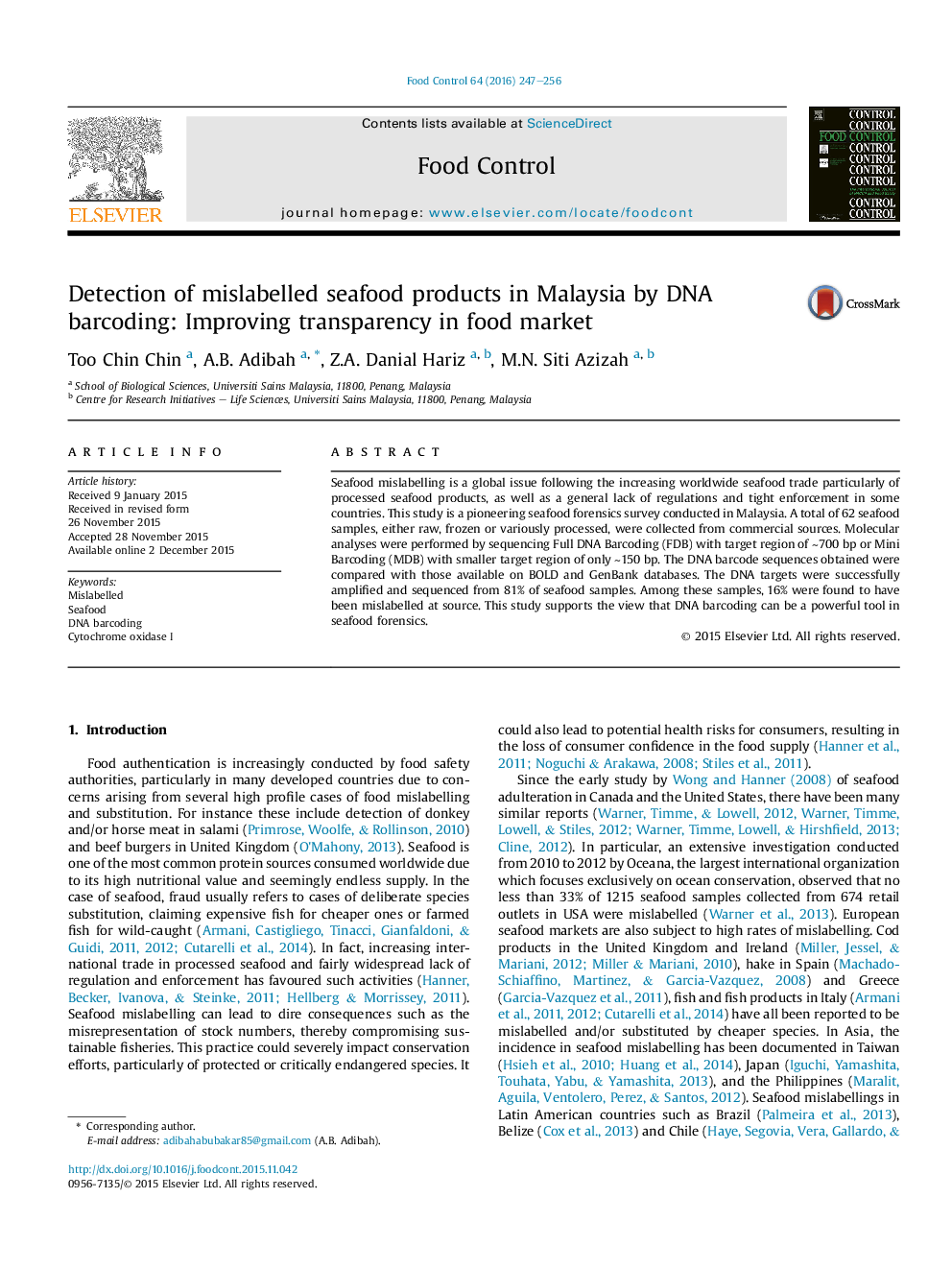| Article ID | Journal | Published Year | Pages | File Type |
|---|---|---|---|---|
| 6390205 | Food Control | 2016 | 10 Pages |
â¢DNA barcoding is an effective tool for seafood authentication.â¢Seafood authentication should be conducted in larger scale which covers more brands and products around Malaysia.â¢16% were found to have been mislabelled.
Seafood mislabelling is a global issue following the increasing worldwide seafood trade particularly of processed seafood products, as well as a general lack of regulations and tight enforcement in some countries. This study is a pioneering seafood forensics survey conducted in Malaysia. A total of 62 seafood samples, either raw, frozen or variously processed, were collected from commercial sources. Molecular analyses were performed by sequencing Full DNA Barcoding (FDB) with target region of â¼700Â bp or Mini Barcoding (MDB) with smaller target region of only â¼150Â bp. The DNA barcode sequences obtained were compared with those available on BOLD and GenBank databases. The DNA targets were successfully amplified and sequenced from 81% of seafood samples. Among these samples, 16% were found to have been mislabelled at source. This study supports the view that DNA barcoding can be a powerful tool in seafood forensics.
